Peter Dornauf – 21 February, 2012
Cut and paste goes back a long way, an old trick that in the early twentieth century saw its practitioners pushing with violence at the boundaries of art. The Dadaists were specialists at the job - Hannah Hoch, Kurt Schwitters and co. Today that sense of violence has gone, replaced with facility of technique, hence, perhaps, the cute title, Soft Cut, for the current show at Waikato University, where the focus is contemporary practice in collage.
Hamilton
Group Show
Soft Cut
Curated by Karl Chitham
February 6 - March 16 2012
Cut and paste goes back a long way, an old trick that in the early twentieth century saw its practitioners pushing with violence at the boundaries of art. The Dadaists were specialists at the job - Hannah Hoch, Kurt Schwitters and co.
Today that sense of violence has gone, replaced with facility of technique, hence, perhaps, the cute title, SOFT CUT, for the current show at the Calder and Lawson gallery, Waikato University, where the focus is contemporary practice in collage.
Curator, Karl Chitham, has put together the work of six artists whose modus operandi is slice and dice, the most literal of which is exhibited in the work of Elliott Collins.
Collins cuts up coloured paper into hundreds of tiny diamond shaped pieces, which he scatters like confetti across his surfaces, then sets them in place with a heavy layer of resin. So far, so ho hum. But after reading the titles, Vincent (Wheat fields with crows), for example, the site takes on a more charged significance. Not only do these broadcast fragments remind one of those dark birds hovering over that dense yellow field of wheat in the van Gogh work,(1890), but one suspects (thought not told) that those tiny wedge shaped shards, come from a copy of the original painting itself. Such an abrupt form of recycling disrupts expectation in the most satisfying of ways.
Ruth Thomas-Edmonds, adept with a Stanley knife, takes her segmented pieces of reinforced cardboard (of differing shapes and sizes) and constructs what appear to be either cityscapes or outcrops of rock formations reminiscent of landforms from coastal New Zealand. That such humble and simple means can delight the eye is a marvel in itself. Clever and quirky by turns, her Heap (Mint) 2011, is an apt example of collage with new life breathed into it.
David Hofer takes a more conventional approach, via painting, to exemplify the notion of cut and paste. His images of identical glider planes in three different works (Formation, 2012) involve subtle and not so subtle shifts in form, composition and colour. What is suggested is a stencil-like method but the freehand painterly manner belies such a procedure, setting up a nice aesthetic frisson in the viewer.
What is digital art but the more sophisticated equivalent of the old scissors and glue. Kate Woods in her photographic montages juxtaposes images of nature and culture; sharp geometric sculptural forms compete for presence against scenes of idyllic backdrops. The textile art of Bronwyn Lloyd is another take on the topic. Her Sliding and Flying (after Jill McDonald, 2012) uses hessian, wool and bamboo to create geometry of shapes with what appear to be astrological and mathematical patterns.
But the accolade for the best reinvention of the collage trope must go to Gavin Hurley and his series on paper that remind one of those cardboard dress-up doll constructions beloved of the 1940’s and 50’s. Hurley’s work is technically more subtle; there are no evident folded flaps to hold things in place and of course his are more than a game to amuse young pre-pubescent girls on a wet Sunday afternoon. There’s political bite to these seemingly charming assemblages.
Chitham, in an accompanying essay, explores the idea of collage from the point of view of the viewer. We respond to and interpret art, he suggests, by the method of collage itself, cutting and pasting stuff from bits and pieces of memory, taking imaginative leaps in order to make meaning of someone else’s imaginative collision of forms.
Peter Dornauf
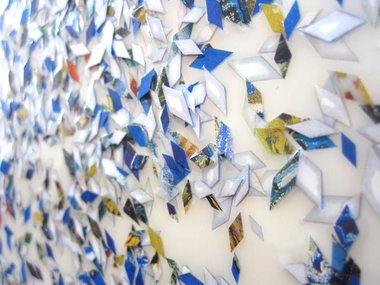

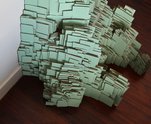


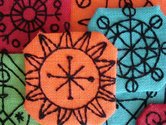

 Advertising in this column
Advertising in this column Two Rooms presents a program of residencies and projects
Two Rooms presents a program of residencies and projects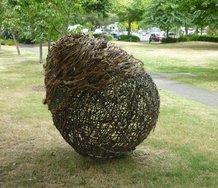
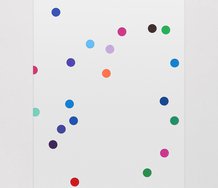
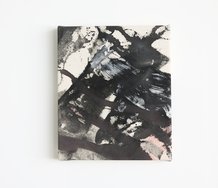
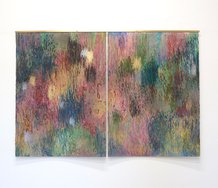
This Discussion has 0 comments.
Comment
Participate
Register to Participate.
Sign in
Sign in to an existing account.